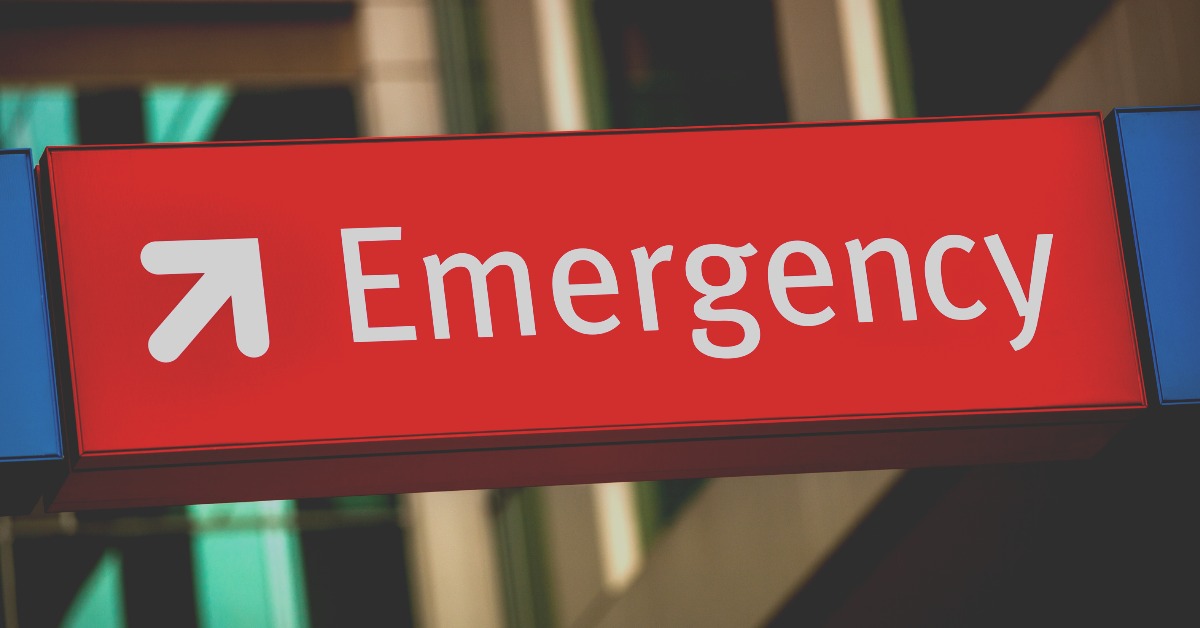
18 Oct The Concerning Trend in Behavioral Health Emergency Room Visits for Children and Adolescents
Medical professionals and public health officials across the United States are expressing concern about the growing rise of youth behavioral health visits in our nation’s hospitals. While alarming, this trend should come as no surprise given the ongoing youth mental health crisis that the COVID-19 pandemic has further exacerbated.
In December 2021, US Surgeon General Dr. Vivek Murthy issued an official advisory to highlight the “pandemic’s unprecedented impacts on the mental health of America’s youth and families, as well as the mental health challenges that existed long before the pandemic.” He then called for a “swift and coordinated response to this crisis as the nation continues to battle the COVID-19 pandemic.”
In the months since that advisory was issued, great strides have been made to address the pediatric mental health crisis and provide resources to youth and their families seeking care. Despite that, many children and adolescents in America still don’t have access to safe and affordable mental health care.
As a result, various factors including inaccessibility, stigmatization, and the lack of healthy coping strategies have turned emergency departments into the primary point of care for children’s mental health emergencies.
Youth Behavioral Health Hospital Visits: By the Numbers
It’s easy to see how grave this mental health crisis has become by looking at national numbers for youth behavioral health emergency visits.
In one February 2022 research study published in the Morbidity and Mortality Weekly Report (MMWR), researchers found significant increases in the number of emergency room visits by adolescent females (aged 12 to 17 years) for a variety of mental health conditions, including:
- Eating disorders (approximately 145 visits per week in 2021, up from 94 in 2020)
- Depression (approximately 2,834 visits per week in 2021, up from 2,132 in 2020)
- Obsessive-compulsive disorder (approximately 59 visits per week in 2021, up from 49 in 2020)
- Anxiety (approximately 2,194 visits per week in 2021, up from 1,794 in 2020)
- Trauma and stressor-related conditions (approximately 817 visits per week in 2021, up from 646 in 2020)
Additionally, one regional study of hospitals in New Jersey found that mental health conditions among teens aged 12 to 17 were driving a noticeable increase in emergency room visits during the pandemic. NJHA’s Center for Health Analytics, Research and Transformation (CHART) researchers found:
- The proportion of depression-related hospital visits for youth increased 25% from 2019 (the last pre-pandemic year) to 2021.
- Depression was the most frequently diagnosed mental health condition among youth ages 12 to 17.
- Self-harm cases resulting in hospital admission rose 95% from 2019 to 2021.
- Inpatient admissions for youth with anxiety increased 54% from 2019 to 2021.
Like the MMWR study, researchers at the NJHA also found that eating disorder-related hospitalizations for adolescent females were roughly 2.5 times higher in 2021 than in pre-pandemic years.
Increasing Access to Care for Youth in Your Community
Many pediatricians and other healthcare providers are worried about the growing trend of youth behavioral health emergency room visits. However, with so many other external factors in play, it’s hard for healthcare professionals to recognize how they can help. Here are some resources and ideas for pediatricians to use in their practice to help encourage improved outcomes and accessibility for the youth in their care.
Share resources with your client population. Healthcare providers are typically familiar with resources from organizations like the CDC, the Substance Abuse and Mental Health Services Administration (SAMHSA), and other academic and professional healthcare associations. Often, the best thing you can do for your patients and their families in your care is to share these resources widely. Whether you send periodic emails, post on social media, or display flyers and posters in your office, sharing this helpful content can make it easier for everyone to find.
Empower the youth in your care with healthy coping mechanisms. Since you are already working with children and adolescents, your patients are lucky to have you! One of the best ways to help them avoid emergency room visits is to work with them to develop healthy coping strategies. Developing these coping strategies and improving resiliency were both identified in the MMWR study as critical to improving national youth mental health.
Integrate with local mental health and behavioral health care providers. One of the best evidence-based care models shown to improve clinical outcomes for youth mental health is pediatric integrated mental health care. By working closely with behavioral healthcare providers, pediatricians can help ensure that the mental health needs of their patients are being addressed and that no symptoms or issues are slipping through the cracks. Recently, the American Rescue Plan Act opened up more avenues of funding to encourage behavioral health integration into pediatric primary care, so it’s the perfect time to form these partnerships.
More Great Resources
Pediatricians can have an outsized impact in providing solutions to the ongoing crisis in pediatric behavioral health. To help you stay informed on the latest trends and data on this topic, check out some of our favorite resources.
What Should I Do?: A Mental Health Resource for Parents
Information on American Rescue Plan Act Funding for Pediatric Mental Health Care Access
Pediatric Integrated Care Resource Center
SAMHSA National Guidelines for Behavioral Health Crisis Care
Office Practicum offers a Mental Health Monitor as part of its integrated pediatric EHR platform. It analyzes data from behavioral health-focused surveys, identifies those patients most at risk, and tracks the scores to account for changes — both positive and negative. Information is displayed in an easy-to-use dashboard that helps you quickly and accurately take appropriate action for your at-risk patients. Schedule some time for a free consultation with one of our specialists to learn about the Mental Health Monitor, and all the other great timesaving features OP offers to support the needs of pediatric practices.



